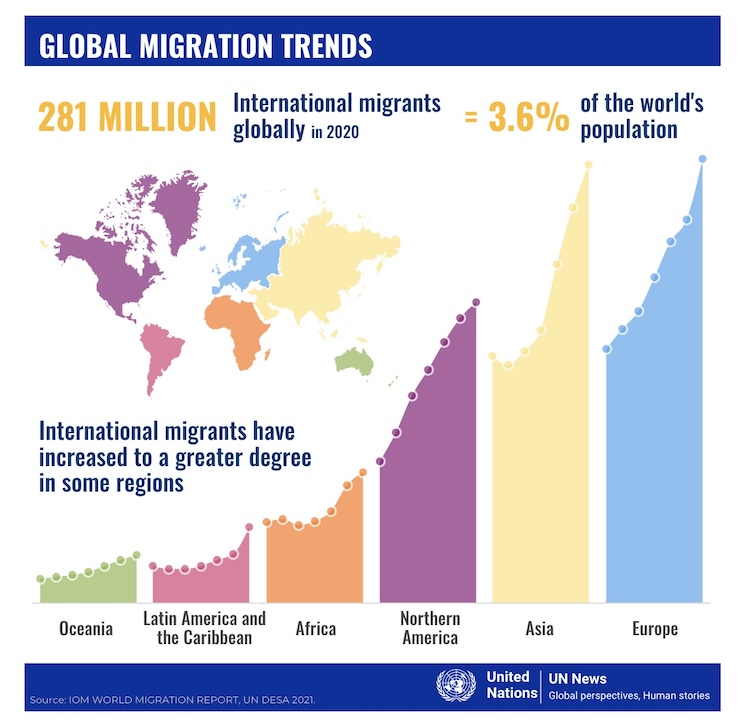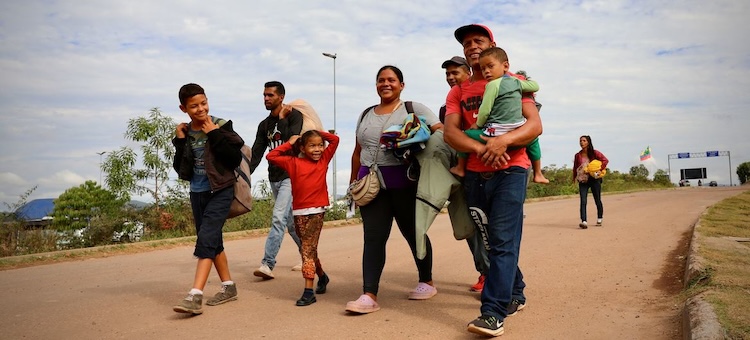By Jaya Ramachandran
GENEVA | DHAKA | 13 May 2024 (IDN) — Migration is an intrinsic part of human history, but it is often overshadowed by sensationalised narratives and headlines that contradict reality.
“Most migration is regular, safe, and regionally focused, directly linked to opportunities and livelihoods,” says the UN migration agency IOM agency. “Yet, misinformation and politicisation have clouded public discourse, necessitating a clear and accurate portrayal of migration dynamics.”
World Migration Report 2024 reveals a significant shift in global migration patterns, including a record number of people displaced due to conflict, violence, natural and other disasters.
The report points out that there is currently a larger number of males than female international migrants worldwide, and the growing gender gap has increased over the past 20 years. In 2000, the male to female split was 50.6 to 49.4 per cent (or 88 million male migrants and 86 million female migrants). In 2020 the split was 51.9 to 48.1 per cent, with 146 million male migrants and 135 million female migrants. The share of female migrants has been decreasing since 2000, while the share of male migrants has increased by 1.3 percentage points.
Money sent home by migrants abroad has surpassed foreign direct investment in boosting the gross domestic product (GDP) of developing countries, the UN migration agency IOM said in the latest issue of its flagship report.
Speaking at the launch in Dhaka, Bangladesh on 7 May, IOM Director General Amy Pope said the report aims to “demystify the complexity of human mobility through evidence-based data and analysis”.
The IMO report points out that international migration remains a driver of human development and economic growth; as highlighted by a more than 650 per cent increase in international remittances from 2000 to 2022, rising from $128 billion to $831 billion.
Growth continued despite predictions that remittances would decrease substantially due to the COVID-19 pandemic.
Most of the money, $647 billion, was sent to low and middle-income countries, constituting a significant portion of their GDP—that is, the amount of money earned from the sale of all goods and services.

Focus on Bangladesh
Globally, these remittances now surpass foreign direct investment in those countries.
The World Migration Report also reveals ongoing challenges. Most people continue to live in the country where they were born. However, an estimated 281 million people—roughly 3.6 per cent of the global population—are international migrants. Of this number, 117 million are displaced—the highest level yet.
IOM chose Dhaka as the site for the report’s launch to both highlight Bangladesh’s efforts to support vulnerable migrants and promote pathways to regular migration and to recognise the country’s important role in shaping global migration discourse and policy.
As a champion of the Global Compact for Safe, Orderly, and Regular Migration, adopted in December 2018, Bangladesh has demonstrated a strong commitment to addressing migration issues and implementing policies that safeguard migrants’ rights, IOM said.
The country’s Foreign Minister, Dr Hasan Mahmud, said “Bangladesh would not only continue to act upon the pledges it has made for its domestic context but will also take up emerging issues and challenges pertaining to migration and development for informed deliberations at the international level”. [IDN-InDepthNews]
Photo: A family arrives in Brazil after crossing the Venezuelan border by foot. (file) © IOM/Gema Cortés.


